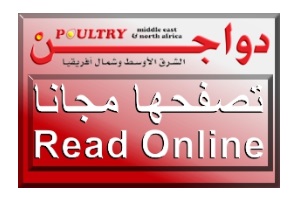
By: Dr. Ahmed Kamal Al-Sayed
The Mycoplasma microbe is considered one of the most dangerous respiratory microbes that infect chickens, because this microbe is neither a bacteria nor a virus, but rather combines characteristics of both, as it is not surrounded by a cell wall like bacteria.
Therefore, antibiotics that eliminate bacteria by destroying the cell wall, such as penicillin and cephalosporin, do not affect the infection by Mycoplasma microbe.
Other names for the disease
1. Chronic respiratory disease (CRD).
2. Inflammation of air sacs
The danger of mycoplasma in poultry flocks is due to 4 reasons
1. They cause high economic losses because some of them affect the upper respiratory system, putting the bird under pathological stress, which provides the opportunity for others to attack the bird, such as Newcastle, IB, ILT, influenza, E. coli bacteria, and others.
2. It affects feed consumption and thus affects the final weights and thus the conversion factor of the flock. This is one of the biggest problems in broiler chickens because nutrition represents more than two-thirds of the cost.
3. It also affects egg production in laying hens and causes a decrease in the production rate by 10-20%, depending on the severity of the infection.
4. It spreads in the flock easily to the point that if there is one chicken infected with mycoplasma, it will be transmitted to the entire flock very easily, and because it reproduces slowly inside the body, you will not see that these birds are sick because it takes some time.
5. It is transmitted from infected mothers to hatched chicks and thus accompanies the flock from the first moment, and this is very dangerous
Types of Mycoplasma that infect poultry flocks
1. Mycoplasma gallisepticum
2. Mycoplasma synoviae
3. Mycoplasma meliagridis
4. Mycoplasma iowae
How is mycoplasma transmitted to poultry flocks??
1. Mycoplasma is transmitted vertically through eggs from infected flocks to the resulting chicks
2. From infected birds to healthy birds through the air, nasal secretions, or glaucoma
3. From one farm to another through people, shoes, etc
4. Through equipment such as feeders and waterers that are moved from one barn to another
5. Wild birds, such as pigeons, sparrows, and others, are susceptible to infection
Mycoplasma gallisepticum


















